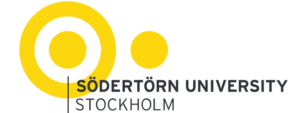Step 1. Facilitate a 10 minute lecture and discussion on alternative/independent forms of media
activism
• ASK – What do alternative/independent media do?
o Ask questions no one else is asking
o Try to empower people to understand issues and act
o Documenting the POV of those closest to news, interviewing prisoners about prisons, students about school, etc.
o More often committed to active publics, social responsibility
o Provide context to news, motivating public policy solutions, give voice to voiceless
o Redefining news (not just headlines and features, also community announcements, talk shows)
o Engage citizens in public life (i.e. public service journalism)
o Often disclose bias where mainstream pretend to be unbiased
• ASK – What are the broad organizational practices that define alternative/independent media?
o can be commercial (business operating for-profit) or non-commercial (not-for-profit organizations) or something else
o can be independent or chain-owned, but does not belong to a media conglomerate
o offers news and information from an alternative point of view
o shows attachment to politics or social movements
o produced by amateurs and/or professionals, by volunteers and/or paid staff
o provides a range of content from local journalism to investigative reporting
o shares content (broadcasts to) a mass audience or a niche audience
Step 2. Participants work solo or in teams of two for 30 minutes. Direct participants to the Diraya website and provide instructions on how to review the case study they choose
• OPTIONAL – Organize participants to work solo or in teams of two
• INSTRUCTIONS – Choose one case study from Diraya, see Case Studies and pick one from Lebanon, Palestine, Iraq, Egypt, Jordan, or Tunisia. Read and take
notes on what defines your chosen media as an example of alternative/independent media
practices. Use the following questions to guide your reading and prepare notes to share your research in discussion:
o What is the mandate and editorial position, is it from an alternative point of view?
o Is your case study linked to politics or social movements, civil society, community, etc.?
o What is the ownership structure? Is it a registered organization, what kind?
o Who produces the media content – amateurs, professionals, volunteers, paid staff?
o What kind of content is produced?
o How is the organization funded?
o Who is the target media user?
Step 3. Facilitate a 25 minute concluding discussion with participants. Have participants share the outcomes of their research to focus on two questions:
1) Why do these media do what they do?
a. Encourage participants to reflect on voice, marginalization, absence, misrepresentation,
etc.
2) How they do it? What are the motivations or goals and what are the ways in which these goals are achieved?
a. Encourage participants to think about the alternative ethos of media activist
organizations and how the decision-making processes, funding, limitations, aesthetics, etc. are different?



